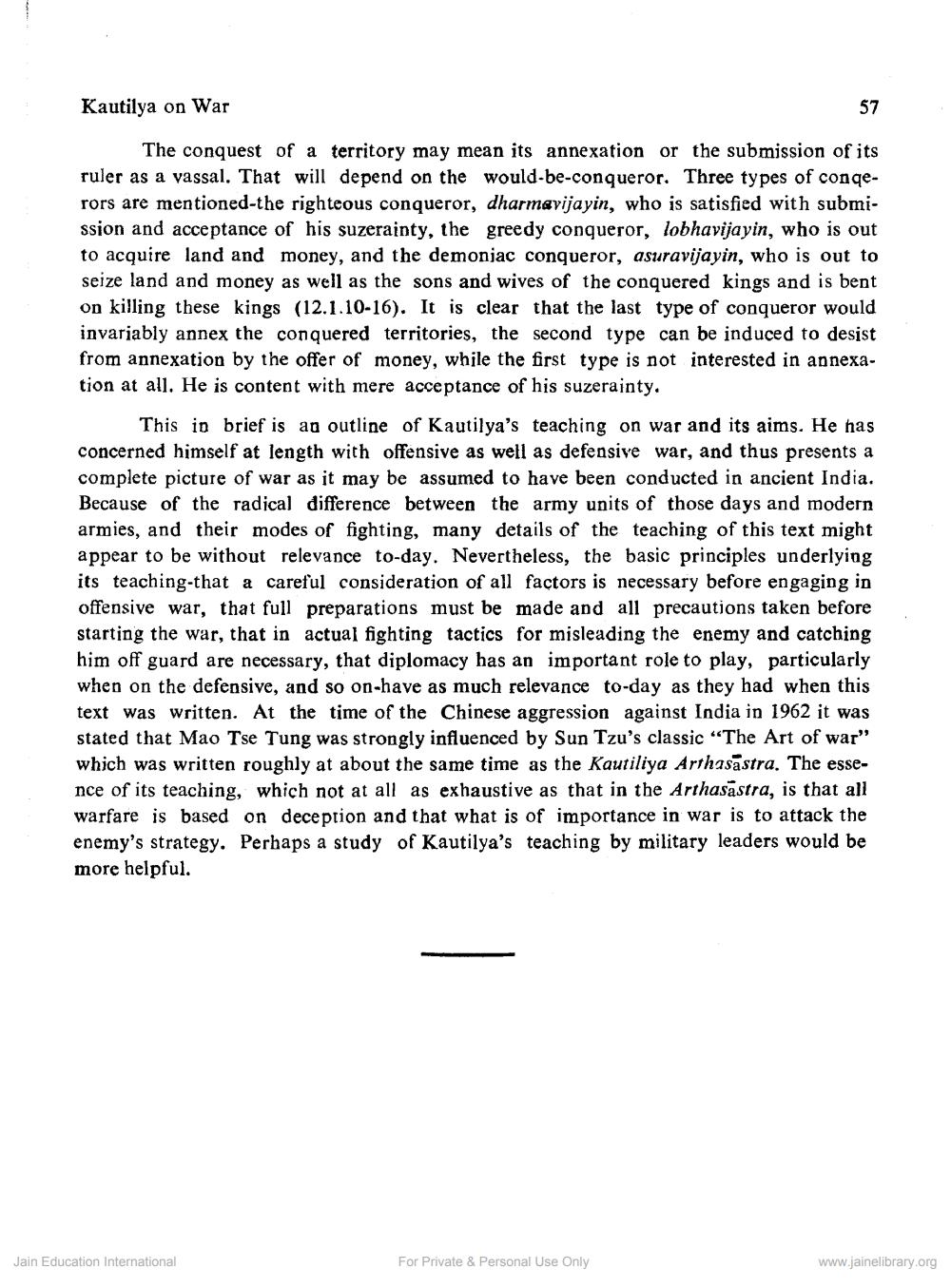________________
Kautilya on War
The conquest of a territory may mean its annexation or the submission of its ruler as a vassal. That will depend on the would-be-conqueror. Three types of congerors are mentioned-the righteous conqueror, dharmavijayin, who is satisfied with submission and acceptance of his suzerainty, the greedy conqueror, lobhavijayin, who is out to acquire land and money, and the demoniac conqueror, asuravijayin, who is out to seize land and money as well as the sons and wives of the conquered kings and is bent. on killing these kings (12.1.10-16). It is clear that the last type of conqueror would invariably annex the conquered territories, the second type can be induced to desist from annexation by the offer of money, while the first type is not interested in annexation at all. He is content with mere acceptance of his suzerainty.
This in brief is an outline of Kautilya's teaching on war and its aims. He has concerned himself at length with offensive as well as defensive war, and thus presents a complete picture of war as it may be assumed to have been conducted in ancient India. Because of the radical difference between the army units of those days and modern armies, and their modes of fighting, many details of the teaching of this text might appear to be without relevance to-day. Nevertheless, the basic principles underlying its teaching-that a careful consideration of all factors is necessary before engaging in offensive war, that full preparations must be made and all precautions taken before starting the war, that in actual fighting tactics for misleading the enemy and catching him off guard are necessary, that diplomacy has an important role to play, particularly when on the defensive, and so on-have as much relevance to-day as they had when this text was written. At the time of the Chinese aggression against India in 1962 it was stated that Mao Tse Tung was strongly influenced by Sun Tzu's classic "The Art of war" which was written roughly at about the same time as the Kautiliya Arthasastra. The essence of its teaching, which not at all as exhaustive as that in the Arthasastra, is that all warfare is based on deception and that what is of importance in war is to attack the enemy's strategy. Perhaps a study of Kautilya's teaching by military leaders would be more helpful.
Jain Education International
57
For Private & Personal Use Only
www.jainelibrary.org




